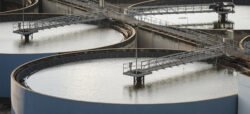Innovative Adsorbents for PFAS
Innovative Adsorbents for PFAS: A Comprehensive Guide for Environmental Engineers
Introduction
In the landscape of contemporary water treatment, the removal of per- and polyfluoroalkyl substances (PFAS) stands as one of the most formidable challenges. These so-called "forever chemicals," known for their persistence and bioaccumulation, have prompted stringent regulations and amplified public concern. As of July 2025, the Environmental Protection Agency (EPA) has set enforceable limits on PFAS levels in drinking water, compelling water treatment facilities and engineers to adopt innovative solutions for effective remediation. Among these solutions, advanced adsorbents are garnering attention as a crucial technology in combating PFAS contamination. This article dives deep into the realm of innovative adsorbents for PFAS, examining their efficacy, mechanisms, and deployment technologies, aimed at water treatment plant operators, municipal directors, and design engineers.
Understanding PFAS and Their Impact
What Are PFAS?
PFAS encompass a vast group of synthetic chemicals used since the 1940s in various applications, including firefighting foams, waterproofing, and non-stick coatings. Their unique chemical structure, characterized by carbon-fluorine bonds, leads to their exceptional stability, making them resistant to thermal, chemical, and biological degradation.
Health and Environmental Implications
Recent studies have associated PFAS exposure with numerous health risks, including liver damage, immune system disruption, hormonal changes, and increased cancer risk. According to the EPA, over 200 million Americans might have PFAS-contaminated drinking water, necessitating urgent regulatory and remedial actions (EPA, 2024).
Regulatory Landscape
Current EPA Regulations
As of 2025, the EPA has implemented stringent standards aimed at limiting PFAS concentrations in drinking water to a maximum contaminant level (MCL) of 4 parts per trillion. These regulations catalyze the push for innovative water treatment solutions capable of meeting these standards effectively and economically.
State-Level Initiatives
Various states have adopted even more stringent regulations, with some imposing MCLs as low as 1 part per trillion. This patchwork regulatory environment creates urgency for municipalities to seek cost-effective, efficient solutions for PFAS removal.
Types of Adsorbents for PFAS Removal
Traditional vs. Innovative Adsorbents
Traditional adsorbents, such as granular activated carbon (GAC) and powdered activated carbon (PAC), have been widely used in water treatment. However, while effective at removing some PFAS compounds, they often fall short for short-chain PFAS due to weaker adsorption capabilities.
Granular Activated Carbon (GAC)
- Strengths: Good for long-chain PFAS and widely available.
- Weaknesses: Ineffective against short-chain PFAS; requires frequent regeneration or replacement.
Powdered Activated Carbon (PAC)
- Strengths: Flexible application; can be dosed in situ.
- Weaknesses: Limited retention time in water systems; higher potential for breakthrough.
Emerging Innovative Adsorbents
-
Biochar
- Mechanism: Produced from biomass through pyrolysis, biochar shows high adsorption capacity due to its porous structure and surface functional groups. Recent studies indicate that engineered biochars can effectively adsorb both long- and short-chain PFAS.
- Case Study: Research from a 2025 study published in Environmental Science & Technology demonstrated that modified biochar achieved up to 98% removal of specific PFAS from contaminated groundwater within hours of contact time.
-
Ion-Exchange Resins
- Mechanism: These synthetic materials can specifically target ionic contaminants, including PFAS. They are particularly effective against short-chain PFAS, which GAC struggles to capture.
- Performance: A 2024 comparative study found that certain ion-exchange resins reduced PFAS concentrations by over 90% in both lab and field applications, with a capacity to regenerate.
-
Activated Carbon Fiber (ACF)
- Mechanism: ACF combines the high surface area of activated carbon with a unique fibrous structure that enhances adsorption kinetics.
- Innovation: Recent advancements have led to ACF being engineered to have increased surface area and tailored functional groups for better PFAS uptake. According to recent industry analysis, ACF can offer up to 30% higher adsorption capacities compared to traditional GAC.
-
Nanomaterials
- Mechanism: Nanocomposites, including graphene oxide and magnetic nanomaterials, have emerged for their potential to adsorb PFAS.
- Effectiveness: A 2025 study outlined how these materials can be functionalized for specific target PFAS, achieving removal efficiencies greater than 95% in laboratory settings.
- Metal-Organic Frameworks (MOFs)
- Mechanism: MOFs exhibit high porosity and tunable chemical properties, allowing them to capture PFAS effectively.
- Research Findings: Recent investigations have demonstrated that certain MOFs can selectively bind PFAS, surpassing conventional adsorbents in adsorption performance.
Implementation Strategies for Innovative Adsorbents
Pilot Testing and Scale-Up
Before implementing innovative adsorbents in full-scale treatment systems, pilot testing is crucial. Conducting in-situ trials allows engineers to evaluate:
- Efficacy under local water chemistry conditions.
- Optimal contact times and dosing requirements.
- Long-term performance and regeneration potential.
Cost Considerations
While innovative adsorbents may entail higher upfront costs compared to traditional materials, their efficiency can lead to reduced operational costs:
- Lower replacement frequencies can offset initial investments.
- Enhanced performance reduces the volume of adsorbents needed.
Public Engagement and Transparency
Communicating effectiveness and safety to the public is critical. Engaging with stakeholders through community meetings and transparent reporting fosters trust and facilitates smoother implementation.
Future Directions in Adsorbent Technology
As the PFAS challenge continues to evolve, ongoing research into innovative adsorbent technologies will be crucial. The development of hybrid systems that integrate different types of adsorbents will likely emerge as a compelling solution, maximizing removal efficiencies and adaptability to various PFAS compounds.
The Role of Regulatory Bodies
Regulatory guidance and support will play a pivotal role in shaping innovations. The collaboration between the EPA, industry stakeholders, and research entities can pave the way for novel technologies that ensure public safety while maintaining ecological integrity.
Conclusion
The battle against PFAS contamination represents one of the most pressing challenges in water treatment today. The adoption of innovative adsorbents offers promising avenues to not only meet regulatory mandates but provide sustainable solutions for safer drinking water. As we stand in July 2025, with evolving regulatory landscapes and a growing awareness of PFAS impacts, the engineering community must champion the development and deployment of these advanced materials. Through continued research and application of innovative adsorbents, we can pave the way towards a safer, healthier water future.

